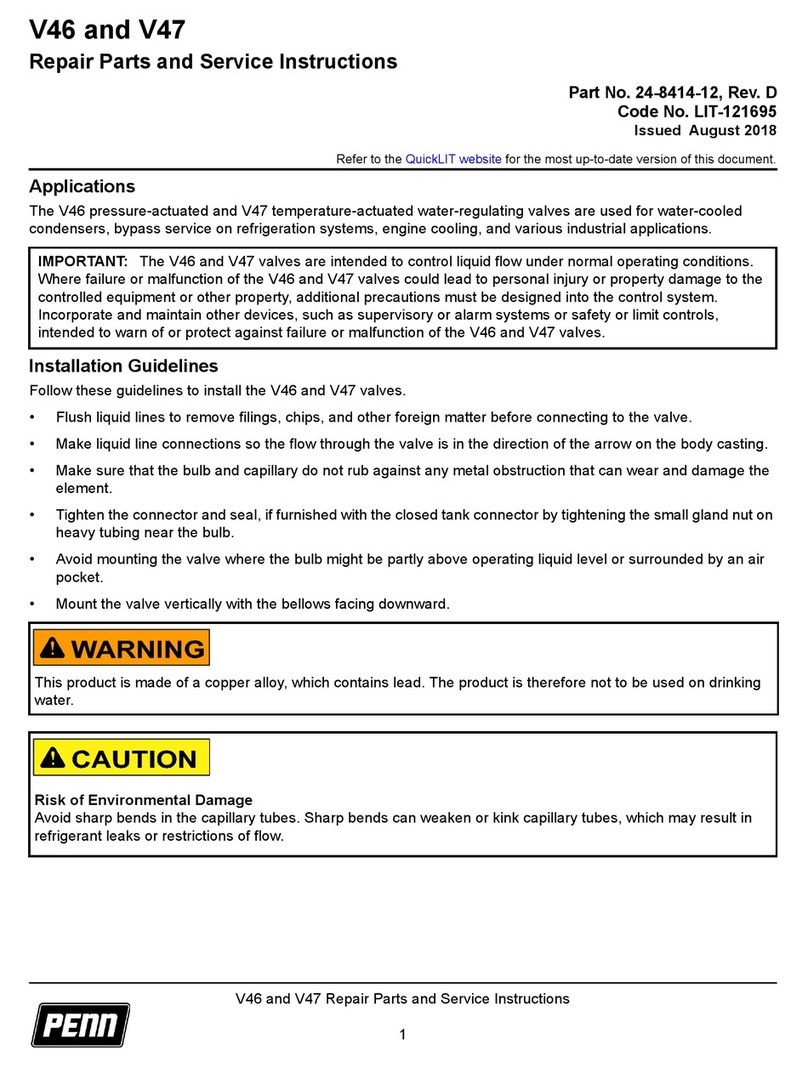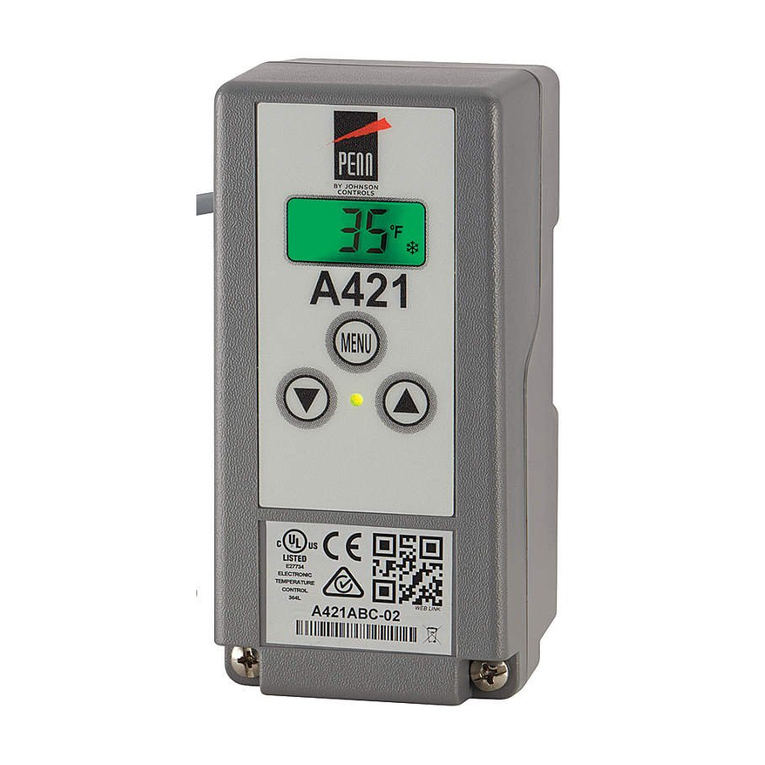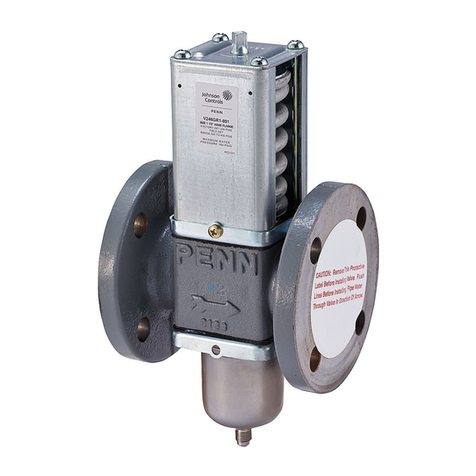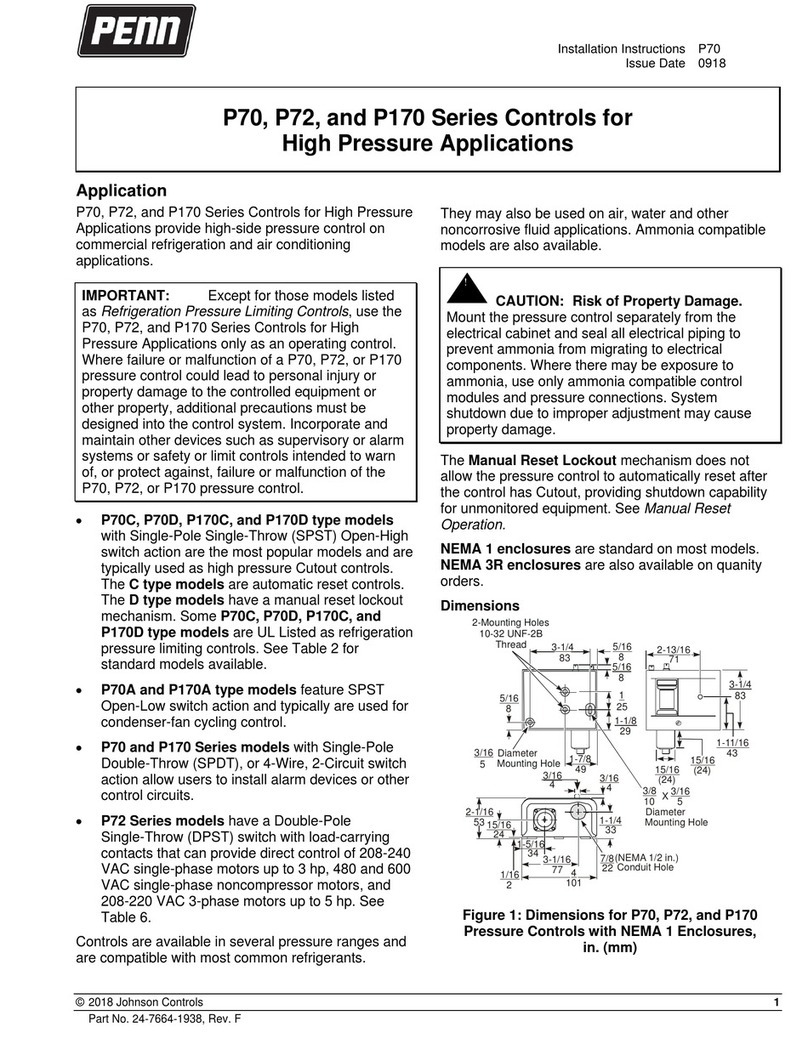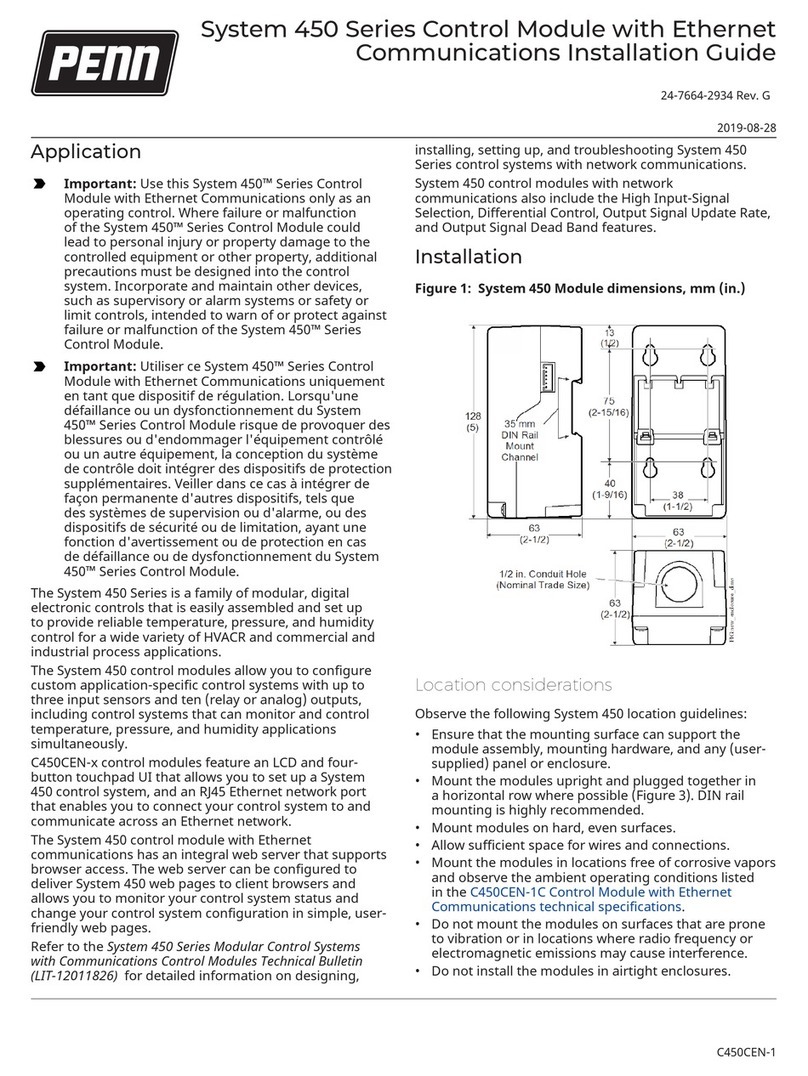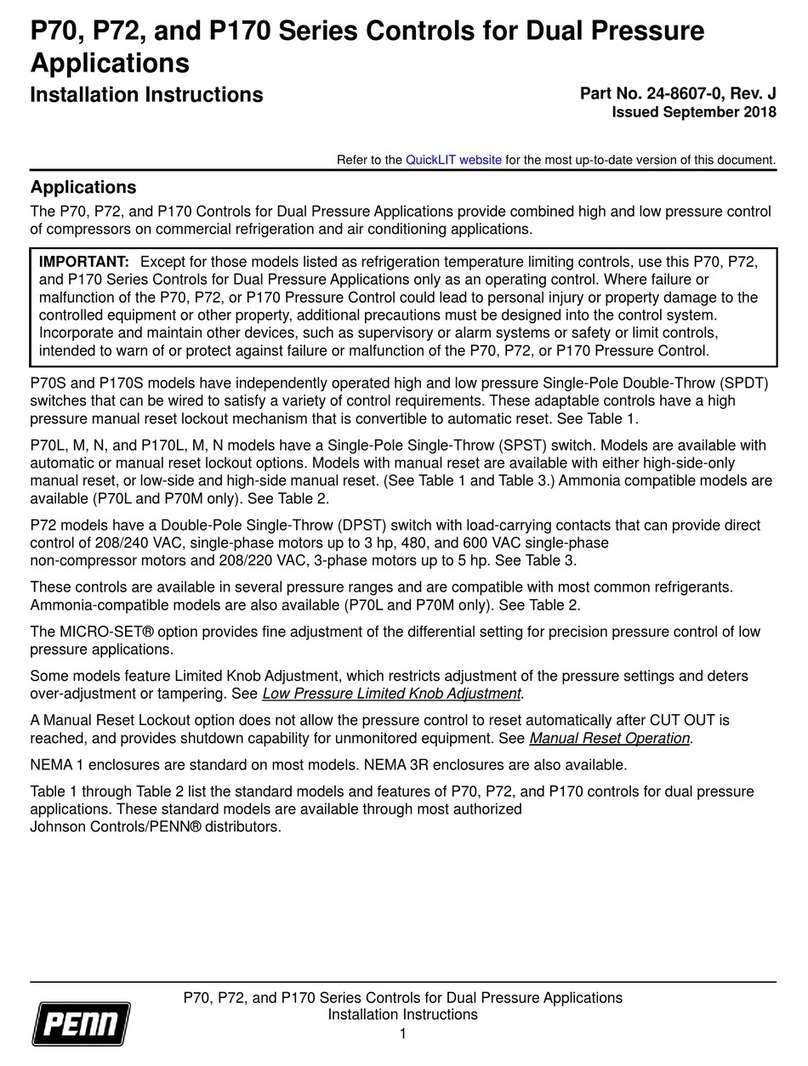
2P—P70, P72, and P170 Controls for High Pressure Applications Product/Technical Bulletin
Application
P70, P72, and P170 Series controls for high pressure
applications are designed primarily to provide
high-side pressure control on commercial refrigeration
and air conditioning applications.
IMPORTANT: Except for those models listed as
Refrigeration Pressure Limiting
Controls, the P70, P72, and
P170 Series controls for high
pressure applications are
intended to control equipment
under normal operating
conditions. Where failure or
malfunction of the P70, P72, and
P170 pressure controls could
lead to an abnormal operating
condition that could cause
personal injury or damage to the
equipment or other property,
other devices (limit or safety
controls) or systems (alarm or
supervisory systems) intended to
warn of or protect against failure
or malfunction of the P70, P72,
and P170 pressure controls must
be incorporated into and
maintained as part of the control
system.
P70C, P70D P170C and P170D models with
Single-Pole Single-Throw (SPST) Open-high
switch action are the most popular models, and
are typically used for high-pressure cutout. The
C models are automatic reset. The D models
have a manual reset lockout mechanism. Some
P70C, P70D P170C and P170D models are
UL Listed as refrigeration pressure limiting
controls.
P70A and P170A models are available with
SPST Open-low switch action, and typically are
used for condenser fan cycling control.
P70 and P170 models with Single-Pole
Double-Throw (SPDT), or 4-wire, 2-circuit switch
action allow users to install alarm devices or other
control circuits.
P72 models have a Double-Pole Single-Throw
(DPST) switch with load-carrying contacts that can
provide direct control of 208-240 V single-phase
motors up to 3 hp, and 208-220 V 3-phase motors
up to 5 hp. Refer to Table 8.
Controls are available in several pressure ranges and
are compatible with most common refrigerants.
They may also be used on air, water and other
non-corrosive fluid applications. Ammonia compatible
models are also available.
CAUTION: Equipment Damage Hazard.
Ammonia is very corrosive to
copper and brass components.
On ammonia applications, only
ammonia-compatible control
models and pressure
connections must be used. The
pressure control must be
mounted separately from the
electrical cabinet and all
electrical piping sealed to
prevent ammonia from migrating
to electrical components.
The Manual Reset Lockout mechanism does not
allow the pressure control to automatically reset after
the control has cut out, providing shutdown capability
for unmonitored equipment. See Manual Reset
Operation.
NEMA 1 enclosures are standard on most models.
NEMA 3R enclosures are also available.
Operation
A pressure-actuated bellows on the control is
connected to a pressure tap on the controlled
equipment by a capillary or a field-installed hose
(except ammonia models). The bellows responds to
equipment pressure changes and operates a
snap-action electrical switch.
